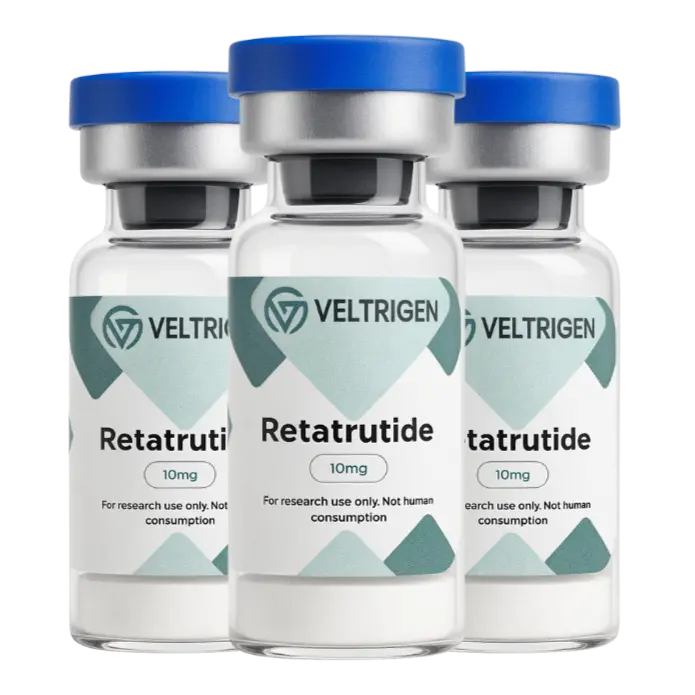
Comparing GLP1, GLP2, and GLP3: Research Insights Into Next-Generation Peptides
Share
In recent years, glucagon-like peptide (GLP) analogs have attracted growing scientific attention. These peptides are being studied for their roles in metabolic regulation, appetite signaling, and energy balance. While multiple analogs exist, three distinct compounds — here referred to as GLP1, GLP2, and GLP3 — represent the latest wave of research interest.
This article reviews findings from published studies, comparing their mechanisms, differences, and the broader significance of GLP analogs in metabolic research.
What Are GLP Analogs?
-
GLP analogs are synthetic peptides modeled after naturally occurring glucagon-like peptides.
-
In animal and preclinical models, they are studied for their ability to modulate glucose homeostasis, appetite, and weight regulation.
-
Researchers are particularly interested in how different GLP analogs vary in receptor activity, half-life, and tolerability.
GLP1 (Sema): The First Generation
-
Research focus: Appetite suppression, blood glucose regulation, delayed gastric emptying.
-
Model types: Rodent and primate studies focusing on food intake and glucose tolerance.
-
Key feature: First widely studied GLP analog with demonstrated metabolic effects in controlled models.
GLP2 (Tirz): The Next Step
-
Research focus: Extended activity, dual receptor interactions, potentially broader metabolic regulation.
-
Model types: Preclinical studies evaluating both appetite control and fat mass reduction.
-
Key feature: Improved half-life compared to GLP1, leading to more sustained biological activity in studies.
GLP3(Reta): The Most Advanced Analog
-
Research focus: Multi-receptor activity, expanded metabolic pathways, and enhanced durability.
-
Model types: Experimental research exploring effects on glucose control, weight modulation, and energy expenditure.
-
Key feature: Designed to combine or amplify the pathways of earlier GLPs, potentially providing more robust results in research models.
GLP1 vs GLP2 vs GLP3: Key Differences
| Feature | GLP1 | GLP2 | GLP3 |
|---|---|---|---|
| Half-life | Short | Longer | Longest |
| Receptor activity | Primarily GLP-1R | GLP-1R + extended effects | Multi-receptor |
| Research focus | Appetite & glucose regulation | Fat mass reduction, extended activity | Multi-pathway metabolic control |
| Preclinical models | Rodents, primates | Rodents, obesity models | Rodents, advanced metabolic studies |
Synergy Across the GLPs
-
GLP1 introduced the foundational concept of appetite and glucose regulation through receptor targeting.
-
GLP2 expanded this with longer activity and broader applications in metabolic studies.
-
GLP3 represents a third-generation analog, combining multiple mechanisms for enhanced outcomes in research settings.
-
Together, these compounds provide scientists with a continuum of tools for exploring peptide-based metabolic regulation.
Why GLP Analogs Are Important in Research
-
They continue to highlight the role of incretin biology in energy balance and metabolism.
-
Their study may contribute to novel strategies for exploring weight management, glucose regulation, and appetite modulation in preclinical contexts.
-
Each generation offers unique insights into peptide design, receptor activity, and translational research potential.
Conclusion
GLP1, GLP2, and GLP3 represent three stages of advancement in GLP analog development. While GLP1 set the foundation, GLP2 improved upon stability, and GLP3 brought multi-receptor activity into focus. Ongoing research underscores the importance of these peptides in metabolic science, and their evolution highlights how peptide engineering continues to expand possibilities in laboratory exploration.
⚠️ Disclaimer: These compounds are for laboratory research use only. They are not approved for human consumption or therapeutic application.